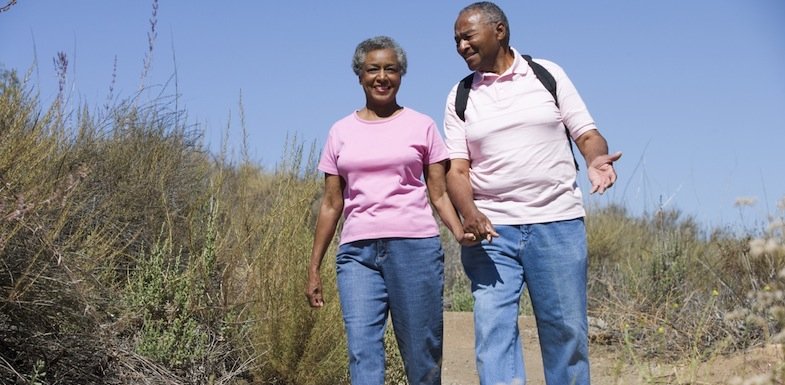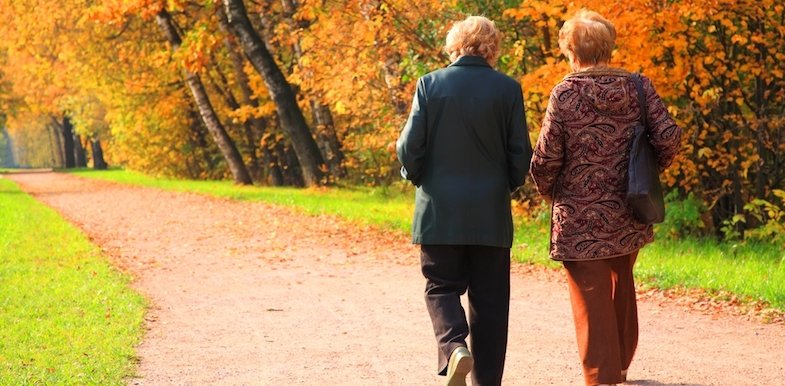Back pain is the second leading cause for visits to the doctor and the most common reason for missed work. Economically, low back pain alone costs the U.S. $100-$200 billion annually. On a personal level, back pain impacts a person’s ability to function in life every day, from small things like cooking dinner to picking up a child. Cost of treatment should not be a deciding factor on whether or not a back pain sufferer finds relief. What if the key to curing your low back pain was as easy as slipping on some shoes? And what if that same cure was free? What about walking? Is walking good for lower back pain? Walking may not cure the most severe forms of chronic back pain, but in many cases, walking is the cheapest, easiest, and most effective way to help heal and prevent back pain.
Is walking good for lower back pain?
Dr. Michal Katz-Leurer from Tel Aviv University’s Stanley Steyer School of Health Professions at the Sackler faculty of medicine and colleague Ilana Shnayderman, a graduate student at the department of physical therapy and a practicing physiotherapist at Maccabi Health Care, found in a recent small-scale study that a program of daily 20-minute aerobic walking that gradually increased to 40 minutes as endurance built was just as effective for low back pain as a twice-weekly muscle-strengthening program typical of physical therapy clinics for back pain.
The walking in the above trial was “aerobic,” meaning that participants were not just strolling along. A slow walk, while not as damaging as high-impact activities such as running, compresses the low back at a steady, constant rate and does not flex the spine.
Faster walking allows more movement and motion in the spine, especially when swinging arms are added. This ups the aerobic ante, too, allowing not only for therapeutic relief of back pain but also cardiovascular benefits.
Why is walking good for lower back pain?
Movement in the back and spine seems to be one of the keys to treatment, and another beneficial type of walking is that of hiking with a loaded backpack over varied terrain. Adding 20 to 25 pounds of weight in a backpack forces the body to remain upright to balance the weight. The uneven terrain helps promote increased movement in the lower body, moving the spine and its attendant muscles.
In addition to promoting movement, which increases blood flow to muscles, and spinal flexibility, walking promotes an overall feeling of well-being.
Aerobic walking releases serotonin and releases endorphins, both “feel-good” chemicals in the brain. Combining this feel-good release of chemicals with work in the large muscles of the torso and legs actually distracts the brain with overwhelming signals. This may result in a decrease in the sensation of pain. This is simply because your brain is too busy processing your large-muscle movement and the surge of serotonin. This is the gate-theory of pain control. Large signals get more attention than small signals, and muscle movement is a larger signal than pain.
How to get started with walking for lower back pain
Talk to your doctor before starting a new exercise program, then lace up your shoes. Here are a few starting guidelines.

Start slowly, then work up
Especially if you have not exercised in a while, it is important to begin slowly. You needn’t plan on hours-long walks. You may start with just ten minutes of walking around the block or on the treadmill. As you gain strength and endurance, add time or intensity, one at a time (not concurrently). So go for longer walks at the same rate or walks of the same distance at a faster pace.
If you can sing when you walk, speed up
The rule of thumb for aerobic walking is if you can sing, you are not going fast enough to realize the most benefit. A good aerobic pace is when you can hold a conversation but not belt out a Broadway tune.
Use good form
Many people with low back pain suffer from lordosis, an overarching of the lumbar curve. This compresses the lumbar vertebrae and causes pain and can eventually cause serious damage. Before you start, take some time to check your posture. Raise your arms above your head (or high as you can if you have shoulder pain) and see what the rest of your body does. If your ribs stick out or your back arch increases, this is good information.
To begin to correct lordosis, lengthen your tailbone down without hunching forward. Lift up tall through the crown of your head. To place your shoulders where they belong, roll them forward, up, then back. Your shoulder blades should be on your back, tailbone should stretching down without tucking the pelvis, ribs should not be splaying forward, and crown of the head should be lengthening up.
Recognize there may be soreness, but don’t ignore pain
You may be sore after your first session. You are exercising muscles and flexing vertebrae that may be stiff from overuse. And, you are likely waking up areas in your body that have had a long slumber, so some soreness is normal and to be expected. Pain, however, is another story. Sharp, stabbing pain, or pain that radiates is a warning sign to back off. Do not ignore your body’s signals, but don’t be scared off by the soreness that comes after a good workout.
Recruit support
Sticking with exercise, especially when it might cause some soreness initially, can be difficult. Make your walks a time to catch up with your kids or visit with friends. Scheduling your walks as social time instead of just a work out can help you get into a routine and stick with it.
While a program of regular exercise can be difficult to get started (and stick with!), it is important to understand that you are not alone in trying to improve your health – literally. More evidence is growing that regular walking groups are good for not only your body but also your mind. Creating a walking group is a great way to improve your health while building supportive, positive relationships in your community.
Start a walking group
The idea of gathering in a group to exercise is not new, but recent research has shown that people who joined walking groups experienced lower blood pressure, resting heart rate, and total cholesterol. Additionally, they had a lower body mass index, a good indicator of physical fitness, and were more likely to stick with regular exercise than those who walked alone.
Researchers from the University of East Anglia used data gathered from over 1,800 study participants in 14 countries. These walkers spent a total of 74,000 hours walking in groups. They included people with health conditions such as Parkinson’s disease, fibromyalgia, obesity, diabetes, and heart disease.
Study leader Sarah Hanson of UEA’s Norwich Medical School pointed out that it isn’t just the activity that makes a walking group such a powerful tool for good health, saying:
“People who walk in groups also tend to have a more positive attitude toward physical activity, a shared experience of wellness, and say they feel less lonely and isolated. Taking regular walks can also be a catalyst for adopting other healthy behaviours. The research evidence suggests people enjoy attending walking groups and appear less likely to drop out than many other forms of activity.”
Get outdoors
The social benefits of walks appear to be amplified when they are taken out in nature instead of in a gym or at a track, even helping to ameliorate depression and stress.
Researchers at the University of Michigan found that outdoor group walking significantly boosted mood and improved walkers’ sense of well-being. Senior author Sara Warber, M.D., associate professor of family medicine at the U-M Medical School and member of the Institute for Healthcare Policy and Innovation, studied nearly 2,000 people participating in walks through the Walking for Health program in England. This program organizes over 70,000 walkers into 3,000 walks annually.
Warber pointed out the high return on investment when joining a walking group, specifically one that meets outdoors, saying:
“Walking is an inexpensive, low risk and accessible form of exercise and it turns out that combined with nature and group settings, it may be a very powerful, under-utilized stress buster. Our findings suggest that something as simple as joining an outdoor walking group may not only improve someone’s daily positive emotions but may also contribute a non-pharmacological approach to serious conditions like depression.”
Celebrate success
Whether it is months in existence, miles walked, or some other goal reached, take some time to celebrate. And, after several walks, take some time to figure out what is working and what needs work in your walking program.
What other tips do you have for getting started with a walking program for lower back pain?
